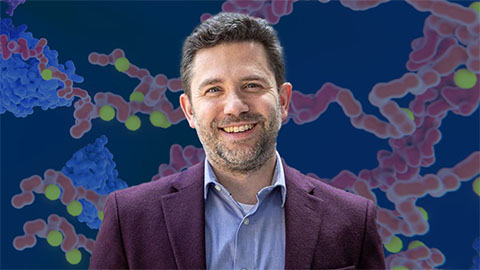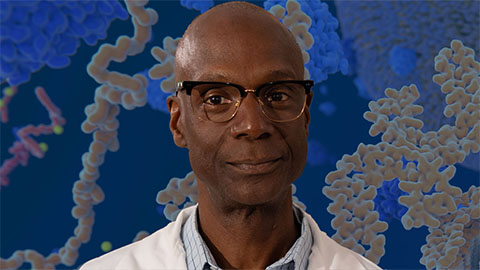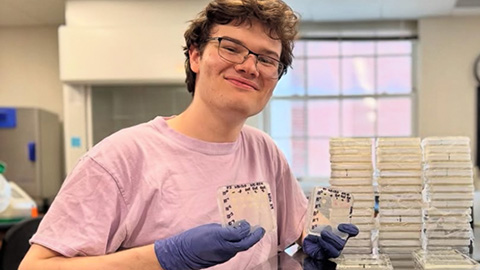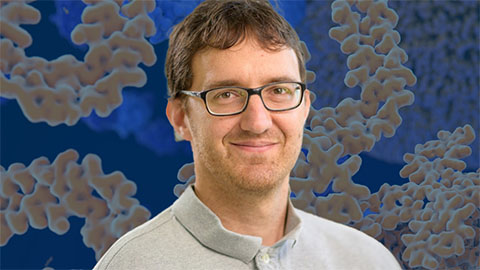Iron metabolism work
wins Tabor award
Nathan B. Johnson compares experimental biology to another challenging process of optimization, fly fishing: “You go to the stream and see what flies are hatching on the surface or what nymphs there are under rocks, and then you try to match the hatch the best you can. Like science, fly fishing success is dependent on accurate observations, predictions, reproducibility, presentation and luck.”

But, he admits, the analogy can break down: “You can sometimes catch a fish in a day; it’s hard to complete an experiment in a day.”
Johnson won a 2018 Journal of Biological Chemistry/Herbert Tabor Young Investigator Award for his work on iron homeostasis, conducted as a graduate student and postdoc at the University of Wisconsin–Madison and published last year in JBC.
It all started with the University of Tennessee Agricultural Extension 4-H program. “I didn’t plan on being a scientist,” Johnson said. “I grew up in rural east Tennessee and was active in a 4-H project, part of the meat product evaluation team.” He followed that track to major in food science and technology. Almost as soon as he started learning the principles of nutritional biochemistry, he realized he would love to teach them.
Biochemistry coursework for a master’s degree in nutritional science introduced him to bench science, another activity he found he enjoyed.
To find out whether he liked research as much as teaching, Johnson took a job as a lab manager in Deborah Segaloff’s lab at the University of Iowa. He managed the lab and worked on structural characterization of gonadotropin receptors. “After doing that for five years, I sort of felt as though I had reached a plateau,” he said, and so he decided to pursue a Ph.D.
Johnson joined the program in biochemical and molecular nutrition at the University of Wisconsin-Madison. He was drawn to work in the lab of Richard Eisenstein by the opportunity to design his own project.
“He gave us the freedom to think critically and to work independently, and I thought, ‘That’s what I really need in order to succeed in science,’” Johnson said.
Since leaving Eisenstein’s lab, Johnson has been a postdoc in Rozalyn Anderson’s lab in Madison, studying a transcriptional coactivator upregulated in response to aging and caloric restriction. He also has developed curricula and is the instructor for three online courses on macronutrient metabolism, personalized nutrition and micronutrient metabolism for the new online master’s degree in clinical nutrition program at Madison.
“I’m in the process of transitioning to a full-time teaching role, which was what initially piqued my interest in research,” he said. “It’s sort of neat to come full circle.”
Controlling iron uptake for cell health
Iron levels in a cell need to be just right. Excessive free iron causes accumulation of reactive oxygen species; deficiency causes anemia. Therefore, cells express a complex system of proteins to calibrate iron uptake and storage.
Two iron-response proteins, IRP1 and IRP2, respond to a low cytoplasmic iron level by binding to RNAs, increasing translation of iron-uptake proteins and reducing translation of iron-storage proteins. This response increases cellular iron level. When free iron is adequate, the two proteins are turned off to prevent excessive accumulation.
Until recently, the two IRPs were thought to be inactivated by distinct mechanisms: IRP1 by adding an iron-sulfur group and IRP2 by ubiquitination. Johnson and colleagues explored crosstalk between the two downregulation pathways, demonstrating that nothing in the system is as linear as it had seemed. They published their work in JBC in August.
When the iron sulfer-cluster machinery was absent, the researchers saw that IRP1 could be degraded by the ubiquitin ligase that destroys IRP2. They also found that impaired iron-sulfur assembly increases levels of the ubiquitin ligase, indicating that the ligase is an important backup mechanism for IRP turnover.
Enjoy reading ASBMB Today?
Become a member to receive the print edition four times a year and the digital edition monthly.
Learn moreGet the latest from ASBMB Today
Enter your email address, and we’ll send you a weekly email with recent articles, interviews and more.
Latest in People
People highlights or most popular articles

Unraveling the language of histones
Philip Cole presented his research on how posttranslational modifications to histones are involved in gene expression and how these modifications could be therapeutically targeted to treat diseases like cancer.

Cotruvo named Blavatnik award finalist
He received a $15,000 prize and was honored at a gala in October.

Phosphatases and pupils: A dual legacy
Yale professor Anton Bennett explores how protein tyrosine phosphatases shape disease, while building a legacy of mentorship that expands opportunity and fuels discovery in biochemistry and molecular biology.

Summer research spotlight
The 2025 Undergraduate Research Award recipients share results and insights from their lab experiences.

Truttmann recognized for cell stress research
He was honored by the Cell Stress Society International for his work on heat shock protein 70.

Understanding the roles of extracellular matrix and vesicles in valvular disease
MOSAIC scholar Cassandra Clift uses mass spectrometry and multiomics to study cardiovascular calcification and collagen dysregulation, bridging her background in bioengineering and biology to investigate extracellular vesicles and heart disease.

